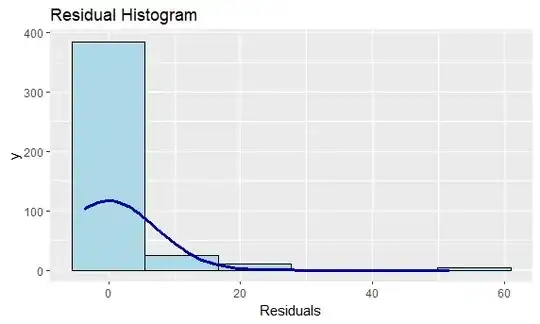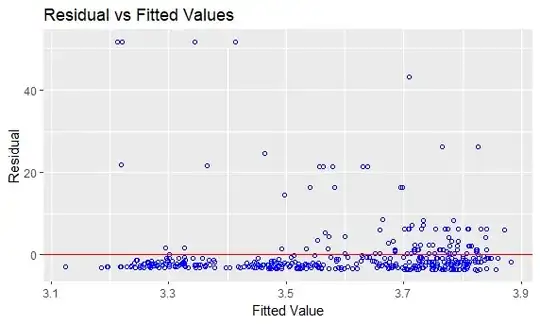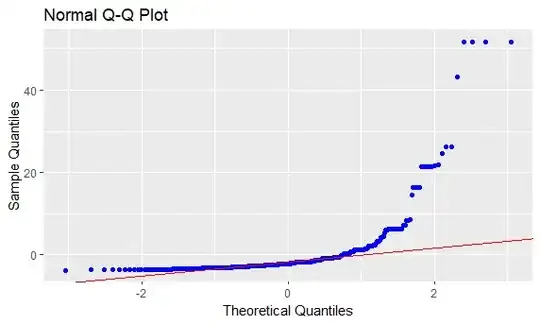I would like to do a regression analysis for my data, but I am not sure what kind of regression I have to apply. I want to do a regression for weed_coverage [%] ~ soil_moisture content [%] for each date . Below you can see a sample (n=10) of my data and some diagnostic plots of the residuals. I know its best to post just one question, but I have a couple and I hope you dont mind:
Since I am measuring soil moisture and weed coverage at the same kettleholes every date, does it mean that I have dependent(paired?) observations? In that case I cant do simple linear regression as far as I understood. Also, the residuals are not normally distributed. Do I need Generalized Linear Mixed Models then? What is the best approach here? Thanks a lot in advance!
date kettlehole treatment distance soil_moisture yield weed_coverage
1 2021-04-27 1189 a 2 11.32 56.1 1.0
2 2021-03-17 119 b 5 36.17 68.3 0.6
3 2021-04-07 552 b 5 25.77 72.6 1.2
4 2021-04-07 119 a 2 26.15 48.5 0.2
5 2021-05-11 119 b 2 7.55 52.9 2.0
6 2021-04-27 1202 b 2 19.45 65.6 2.0
7 2021-04-07 119 a 2 23.10 63.6 1.0
8 2021-05-11 2484 b 5 10.28 43.4 4.5
9 2021-03-17 552 b 5 36.00 68.1 0.9
10 2021-04-07 2484 a 2 26.15 48.8 1.5


